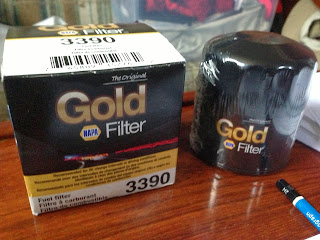With the monsoon season bearing down on Coastal BC, leaky windows were something that was going to have to be dealt with. My experience with anything glass has usually ended in complete disaster.
There was the time I was just playing road hockey as a lad in the school yard when an errant shot found it's way through my classroom window. Cost me cash, detention and I never did get my road hockey ball back. There was the time in my 20's at some party enjoying a cold stubby bottle of brew that I could not seem to hang onto- I have the scars on my thumb to remind me of that encounter with silica fragments. And there was that chard of green wine bottle glass that was finally removed from my left foot after more than 25 years back in the late '90's. So you see my trepidation with all things GLASS.
When I had bought Corleto, the port lights were watertight. We picked her up in a driving rain and there was no leakage into the cabin. That would soon change as at some point during our first summer together she developed a drip coming in from her starboard middle window. It wasn't particularly bad but I had been told that all boats eventually leak though their ports, often the culprit was a seal between the cabin wall and the frames of the "port lights". It was not long before a second drip manifest itself on the port side middle window. My mission now was to remedy this before the heavy rains of winter.
I researched what i could find on the web about "port lights" and windows on Catalina's . The usual suspects at our marina offered what they could about potential solutions. Things like ordering from Catalina Direct a window replacement kit, to retro fitting with frameless windows, to simple solutions of replacing the old seals and re-bedding with butyl tape.
Having never done anything like this before I was certain that I would royally muck this up. I was convinced that once I got into this and removed the frame from the cabin walls, it would leave a hole so big and a project so complex that it would take me months to repair.
"Murman, you gotta chill the hell out. Take a breath, it's not as complicated as you think"- Corleto
 |
| The gentle prying to begin with my puddy knife |
Here goes nothin', I got my tools together and began to disassemble the port frame from the inside. All the while being careful with my screwdriver so as not to slip and crack the glass. When that was completed and all the screws were in a secure place, I went topside to begin to pry the frame free of the cabin. Patience was the order of the day and surprisingly, given my impatient nature, I took it slowly. Once the frame was free and the old butyl tape removed, I was delighted to see that no moisture had penetrated the core of the cabin walls. This led me to believe the leaky problem was in fact a seal between the glass and the aluminum frame. This turned out to be the case for both port and starboard sides. I decided that a simple re caulking of the windows would do the trick.
I took the frame home to perform the task as light was beginning to fade. Also with temps dipping and early morning dew expected, I figured having the sealant cure at room temp at home would be better in the long run. I sealed the gapping holes with plastic and duct tape and prayed it would not rain overnight.
 |
| Applying a bead of caulking, less on me and more where it is meant to be. |
My experience with all things made of glass, as briefly described earlier, pales in comparison to my experience with a caulking gun. Caulking usually ends up everywhere EXCEPT the very place I am trying to apply it. Sealing my first port light would be no different, got it on my shirt, on my pants but managed to spare my hair, but I did manage to successfully reseal glass to frame. Port light number 2 would be some what easier learning from the lessons oozing sealant that found its way to the correct crevice.
 |
| Trying to keep it neat. |
After an over night of curing, it was back to Corleto for the install. I lined the frame with butyl tape and then gingerly shoved the frame back into place. Gently using my closed fist to "bump" it into its cabin hole. I was delighted that my make shift patch had kept any moisture out of the cabin structure. After a couple of choice nautical F-bombs, the frame settled into its correct position. Returning inside I assembled the inboard frame collar and screwed it tight. This sealed the butyl taped outside frame to the super structure of the cabin. A brief smile and the satisfaction of NOT breaking the glass during the process had me feeling pretty good about my window repair.
Now the true test will be when the driving rains begin. Confidence is High.
 |
| After the masking tape is removed, it looks ok. Tidier than I expected. |






































